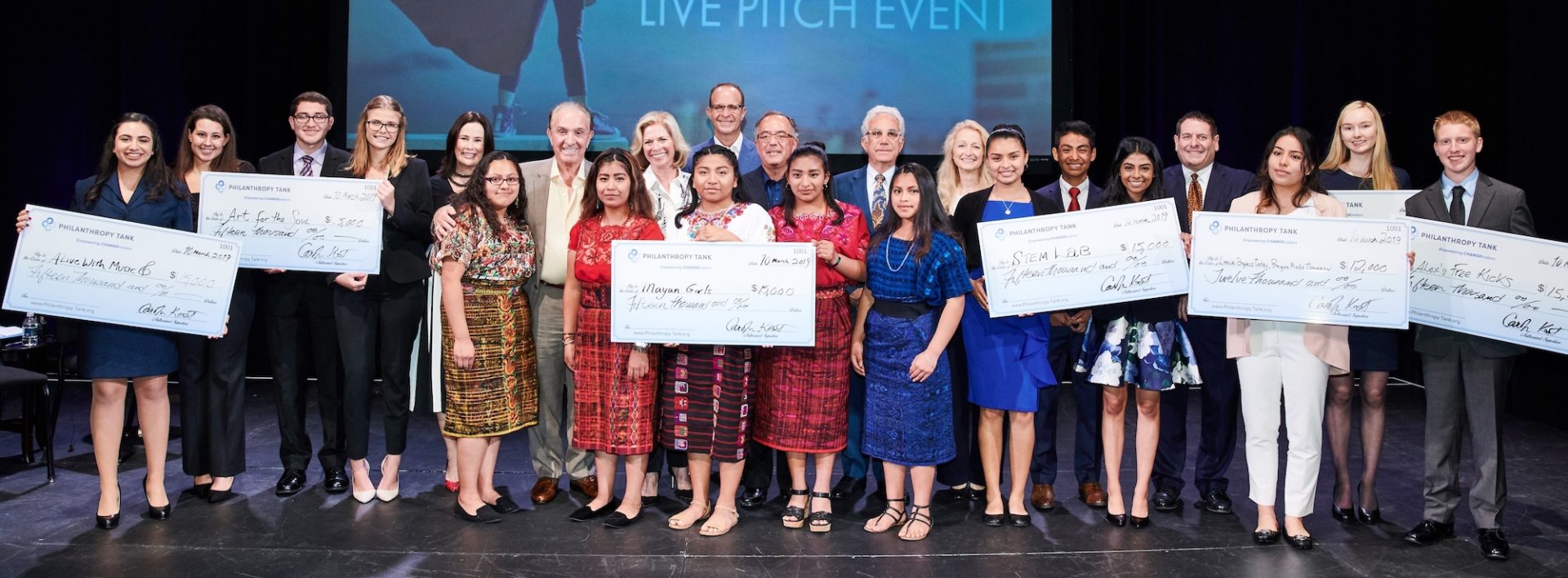Are you ready to apply to Philanthropy Tank?
Check out these FAQs!
Applying to Philanthropy Tank can seem scary at first, but the process is actually simple. Below we list common FAQs regularly discussed with students.
After reading these questions, reach out to us if you are interested in setting up a workshop with Philanthropy Tank staff!
General Tips:
- Read the entire application before answering the questions. When completing the application, completely answer the question and ONLY the question.
- Philanthropy Tank supports student-ideated and led proposals. Projects written by parents, teachers, mentors, and other adults will be rejected.
Who can apply for Philanthropy Tank funding?
- Students in the 8th-12th grades can apply. Up to four students can apply to support one project.
- Your program proposal must diectly impact the location you are applying to (Either Palm Beach County or Baltimore City).
Must my program be affiliated with my school to be considered for funding?
- No, but we encourage you to align your program with entities already working with the population you want to serve. Your program can be affiliated with a school, community-based organization, governmental agencies, etc. Collaboration with these entities can help provide you data and support to execute your idea.
How much time should I spend completing the application?
- A good application can be completed in one sitting.
- A great application takes time, research, and thought. Philanthropy Tank will only fund GREAT applications.
Application Tips:
Does Philanthropy Tank offer support to help me complete my application?
- Yes, Philanthropy Tank offers workshops on budgeting, identifying an issue, video support, and many other topics. Contact the PT team in your city for dates on upcoming workshops.
What can I do to submit a strong application?
- Our best applications come from students who understood the issue they wanted to address.
- They knew who would benefit from their programs’ service, understood which community-based organizations were already addressing needs in their communities, etc.
- A strong applicant finds a novel approach to solving an issue OR identifies and fills a gap in services already being rendered. You could take the following approach to learn more about your issue:
- Identify an issue that resonates strongly with you and your community.
- Ask community members, teachers, and Google about organizations addressing your issue.
- Research and contact the organizations that are working to address the issue in your community.
- Create a list of questions to interview contacts at those organizations.
- Following these steps will help you learn more about what is happening in your community.
Where can I find demographic data about my community?
- There are many data sources in your community and online that can help you describe your community. Contact your local community center or library to help you identify appropriate data sources for your project.
How do I create strong performance metrics for my program?
- There are many ways to assess the effectiveness of your program. However, before thinking about performance metrics, think through how success would look if you executed your program flawlessly.
- This line of thinking will help you envision your program running optimally; thereby, allowing you to ask the appropriate questions to measure success. You can ask the following questions when demonstrating the impact of your program.
Demonstrating Impact – Tips:
How much will you do?
- This measure allows you to quantify the number and type of activities, the number of engaged people, and the amount of effort expended.
- People of Organization: # of people contacted and served
- Activities: # of activities held
- Deliverables: # of interviews, websites, products, etc.
How well will you do it?
- This measure allows you to assess the quality of your program.
- Attendance: % of people participating/ completing course
- Satisfaction: % of people satisfied with session, event, experience
- Costs: Cost per person/unit
Is anyone going to be better off?
- This measure quantifies the change in attitudes, opinions, behaviors, and circumstances.
- Behaviors Changed: # or % adopt new habits
- Attitudes Shift: # or % change in beliefs
- Circumstances change: # or % benefitting from, receiving, etc.
- Knowledge: # or % increased knowledge/understanding
- Skills Improved: # or % of new skills developed, old skills enhanced
Budgeting Tips:
What expenses does Philanthropy Tank support?
- PT supports supplies, transportation, food, supplies, and other program-related materials. We do not fund salaries, stipends, honorariums, staffing costs, or fees. Please find volunteers who can support your program for free.
How much money should I request from Philanthropy Tank?
- Use the budget document to help you determine your final ask. You should communicate with vendors to obtain reasonable pricing for the materials and services you need to execute your project. Philanthropy Tank will not support emergency funds in your proposal.
